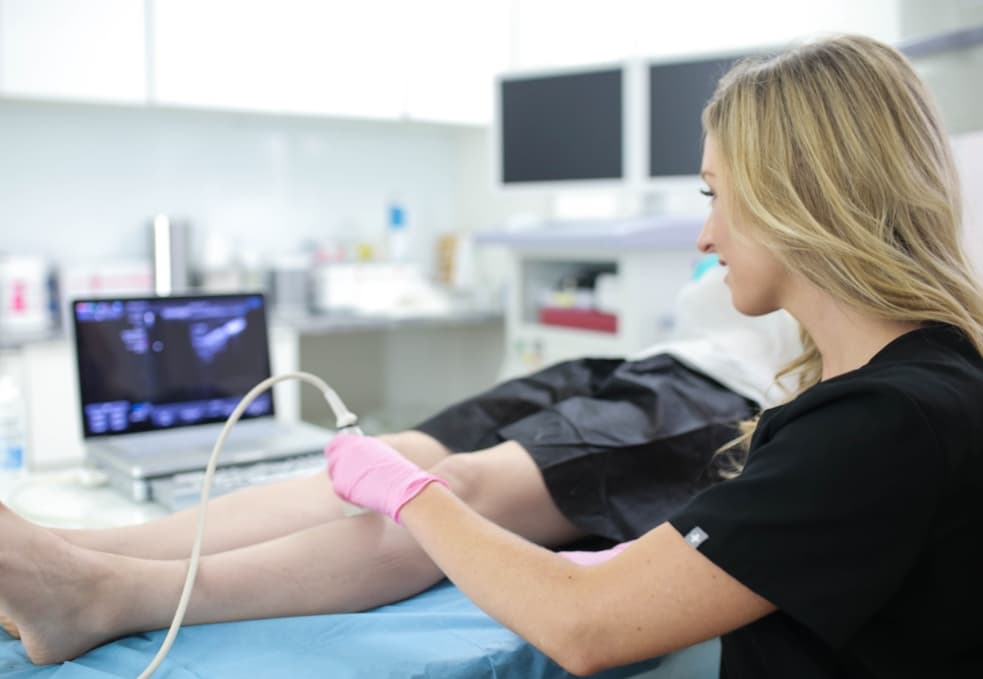What is the main cause of varicose veins?
If you have varicose veins, you’re probably concerned about what they indicate. Varicose veins are incredibly ugly — they look like a dense mass of twisted, tangled, and knotted ropes bulging out of the skin’s surface. They can be reddish, bluish, purplish, greenish, or skin-colored, and they usually appear on the lower extremities of the body.
If you have varicose veins, you may have an urge to conceal your legs by wearing oversized clothing. Most patients with varicose veins and spider veins avoid social events that necessitate wearing shorts or dresses. Prolonged self-imposed social isolation can also lead to mental health problems, anxiety, and depression.
If you’re wondering about the main cause of varicose veins, we have the answers for you. Below, we describe the main cause of varicose veins and the risk factors of chronic venous insufficiency.
Chronic venous insufficiency: the primary root cause of all vascular problems, including spider veins and varicose veins
Chronic venous insufficiency is the primary root cause of most vein problems, including spider veins and varicose veins. Venous insufficiency is a medical condition caused by damaged vein valves. The valves are flexible mechanisms within veins that act as one-way doors, ensuring smooth one-way blood circulation to the heart, even against the force of gravity. They allow blood to flow towards the heart, but not backward. Damaged vein valves cause blood to flow backward and accumulate in the leg veins due to gravity.
The continued accumulation of blood in leg veins leads to poor blood circulation and numerous vascular problems. The earliest signs and symptoms of vein disease include leg heaviness, frequent leg cramps, restless leg syndrome, leg pain and swelling, leg discomfort, and spider veins. But as blood continues accumulating in the leg veins, the veins dilate even more, leading to protruding varicose veins. If left untreated, vein disease can eventually lead to leg ulcers, skin discoloration, and a dangerous medical condition called deep vein thrombosis.
As such, venous insufficiency is the main root cause of varicose veins.
Risk factors of chronic venous insufficiency and varicose veins:
- Genetic Predisposition: Genes are the leading risk factors for chronic venous insufficiency. If your mom and dad have a history of vein problems, there’s a 90% chance that you’ll eventually suffer from vein disease or varicose veins.
- Age: The risk of vein problems increases as you grow older. As you get older, your vein valves weaken and get damaged because of wear and tear, increasing the risk of vein disease. The risk of vein disease is particularly high amongst individuals over 50.
- Biological Sex: You have a higher risk of vein problems if you’re female. Women generally have a higher risk of vein disease than men because the female hormones, estrogen and progesterone, can weaken the vein valves.
- Hormonal Changes: You have a higher risk of vein problems if you’re undergoing hormone therapy or changes that increase your body’s estrogen and progesterone levels.
- Pregnancy: Pregnant women have a high risk of vein disease and vein problems for several reasons. When you’re pregnant, the weight of the uterus applies pressure on the vein valves, and the body produces a higher level of estrogen and progesterone.
- Sedentary Lifestyle: The risk of vein disease is particularly high amongst individuals leading sedentary lifestyles. When you’re inactive for extended periods, blood may accumulate in the leg veins, leading to spider veins and varicose veins.
- Occupation: The risk of vein disease is higher amongst individuals with jobs that involve long periods of sitting or standing still, such as teaching, nursing, driving, and desk jobs.
- Obesity: Obese individuals have a higher risk of vein problems. When you gain weight, more pressure is applied to the leg veins, increasing the risk of vein disease.
How can I stop varicose veins getting worse?
If you want to stop varicose veins from worsening, you must implement some lifestyle changes that improve blood circulation and push accumulated blood towards the heart. The following are some lifestyle changes and remedies to alleviate the symptoms of varicose veins:
- Wear compression stockings to push the accumulated blood in your veins towards the heart.
- Engage in cardiovascular exercises that improve blood flow towards the heart, such as running, cycling, swimming, and yoga. These exercises also engage your calf muscles, thus pushing the accumulated blood towards the heart.
- Elevate your legs above your heart’s level while sitting down.
- If you have a desk job, take short walking breaks every hour.
Does drinking water help varicose veins?
Drinking water helps with proper blood circulation. You must remain hydrated to facilitate optimal blood circulation and strengthen your veins. But if you already have varicose veins, drinking more water won’t address the underlying problem. At this stage, the only way to remove varicose veins and address the underlying issues is through medical intervention.
What is the best way to get rid of varicose veins?
The best (and only) way to get rid of varicose veins is through minimally invasive spider vein and varicose vein treatments, such as radiofrequency ablation, laser ablation, venaseal, clarivein, and ambulatory phlebectomy. The vein doctor diagnoses the root cause of varicose veins, destroys the diseased saphenous vein responsible for your vein problems, and removes the superficial varicose veins through small incisions on the skin’s surface. The specific details of the procedure might differ, but the aim is to address the root cause of varicose veins to ensure long-lasting results.
